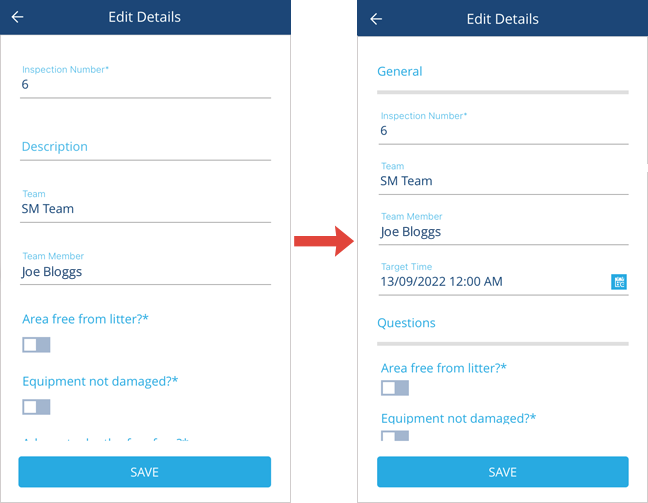Item forms in action
Item forms for designs
If an item form is created for a design, it will automatically be presented to a user when they create/edit an item of that design (depending on how the item form is configured).
If multiple item forms exist for a design, the most appropriate one will be used for the situation, based on its Tag values. In a future update, users will be able to choose from a list of available item forms, or opt to use the standard item form instead.
If an item form doesn't appear for a user, they may lack permission to read it.
Item forms for interfaces
If an item form is created for an interface, it'll potentially apply to every design that uses that interface (unless overridden by a design-specific item form). This can save you having to create multiple item forms for multiple similar designs.
However, note that an interface item form can only contain controls for its own attributes. Therefore, while the item form can be used with designs that implement the interface, it can't contain any design-specific attributes.
For example, while an item form for the Assets interface could be used to create/edit an item of the Street Lights design, it lacks too many attributes to be useful.
Therefore, item forms are best suited to interfaces that contain many attributes common to the designs that implement them, e.g. a Playground Equipment interface implemented by Slides, Roundabouts and Swings designs.
What if the design/interface changes?
If the attributes on a design/interface are changed, any item forms based on it may be affected.
| Design/interface change | Effect on item form(s) | Action to take |
|---|---|---|
| An attribute is added | None | Consider adding a control for the new attribute to the item form |
| An attribute is removed | The missing attribute is hidden and skipped | Remove the attribute's control from the item form |
| An attribute becomes required | If the item form is submitted without a value for this attribute, it will fail | Edit the attribute's control properties to make it required too |
| An attribute becomes read-only | If the item form is submitted with a value for this attribute, it will fail | Edit the attribute's control properties to make it read-only too |
| An attribute is renamed | None | None |
Reverting to the standard item form
The standard item form will be used in these situations:
-
no item forms exist for the design/interface
-
the user lacks permission to see available item forms for the design/interface
-
the user chooses to use the standard item form (coming soon)
The standard item form lists all attributes of the item's design/interface, in the order they were added (or defined in a stencil). Required attributes are indicated with an asterisk * .
Item forms on Alloy Mobile
If an item form exists for a design/interface, it'll automatically be displayed to users when creating or editing a corresponding item.
Users will only see attributes that the item form has controls for, displayed in the order defined by the item form.
If multiple item forms are available, the one most relevant to the user's situation will be presented. For example, an item form tagged as Mobile will be prioritised over one tagged All platforms.
If no item forms are available, the standard item form will be presented, as described above.
Item forms currently have these limitations on Alloy Mobile:
-
Expressions aren't yet supported and will go unprocessed if present.
-
Some control types aren't shown to Mobile users. See the Attribute control types list on Editing item forms.
